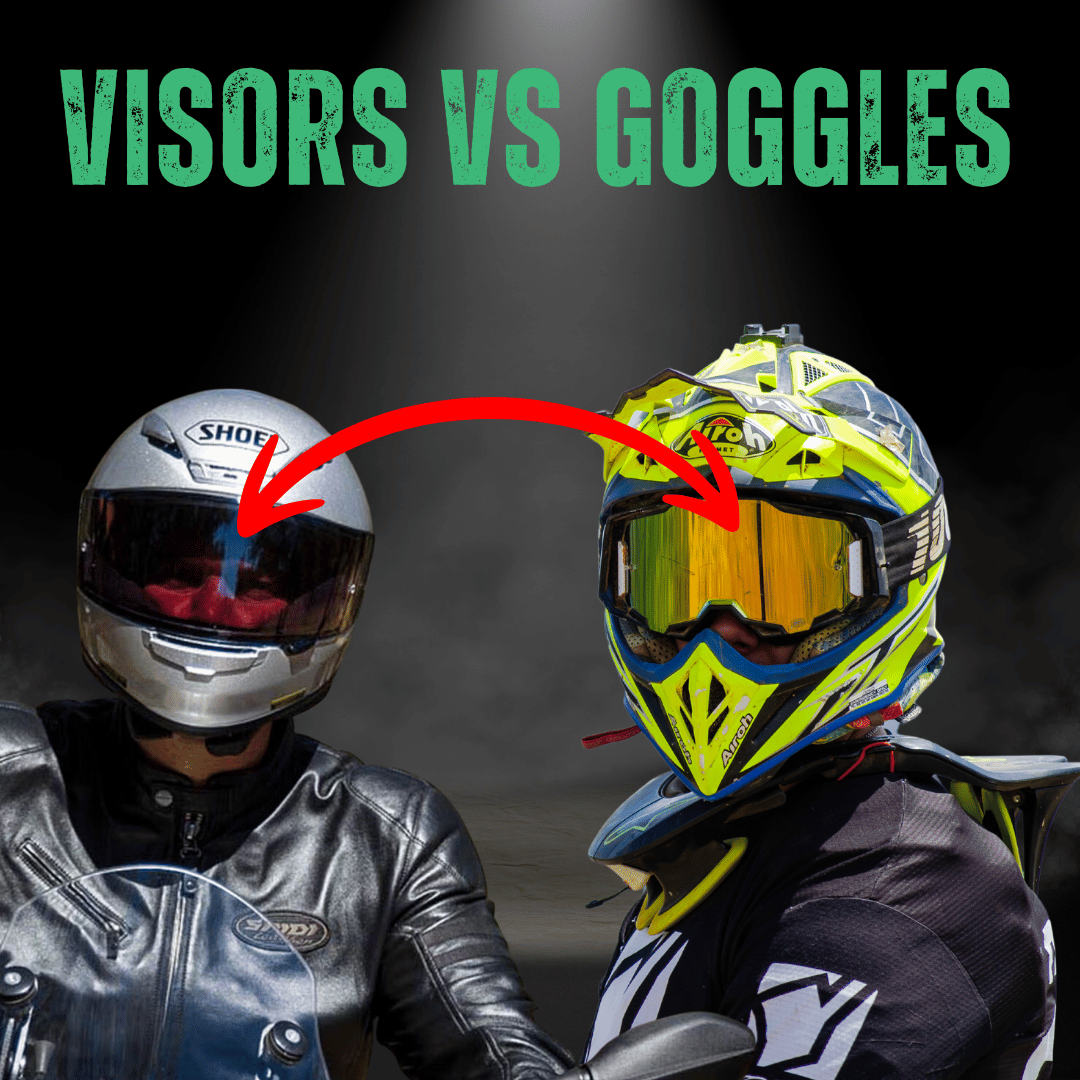
Updated: 25.4.25
Imagine cruising down the open road, the wind blowing past your face, the roar of the engine beneath you—thrilling, isn't it?
But while enjoying the freedom of motorcycling, one can't overlook the crucial element of safety, particularly eye protection.
So here's the big question: visor vs goggles—which should you choose?
Whether you're a seasoned rider or just getting started, making the right choice between motorcycle goggles and visors could significantly impact your riding experience.
From factors like speed and UV protection to personal comfort, this article dives into everything you need to know to make an informed decision.
1. Motorcycle Safety Tips: Goggles vs Visor
2. Goggles vs Face Shield: Which Is Better?
Face shields (visors) are built into the helmet, offering seamless integration and full-face protection. Goggles, however, provide a snug fit and better air circulation, especially in off-road or motocross settings.
3. Helmet Without Visor — Is It Legal?
In the UK, riding a motorcycle without a visor is legal as long as you use approved goggles that meet BS 4110 standards. Tinted visors are also legal for daytime use if they allow more than 50% light transmission, but they are not legal at night or in poor visibility conditions.
Learn more: UK Motorcycle Helmet Law
4. Where to Buy Motorcycle Goggles in the UK
If you're looking for high-quality motorcycle goggles, RiiRoo offers a wide selection tailored for kids and adults alike. Check out our latest range here:
Motorcycle Goggles UK Collection
5. Frequently Asked Questions
Is it legal to ride a motorcycle without a visor or goggles?
Yes, but only if your motorcycle has a windscreen that provides sufficient protection. If not, you're legally required to wear visors or goggles that meet BS 4110 safety standards.
Can I use regular sunglasses instead of a visor or goggles for short rides?
While you can technically use them, regular sunglasses don’t offer the same protection. Certified motorcycle goggles or visors are strongly recommended, especially above 30 mph.
How do I know if my visor or goggles meet safety standards?
Check for marks like BS 4110, CE, or ANSI Z87.1. These confirm that the product meets tested safety and UV protection criteria.
Are tinted visors legal in the UK?
Yes, but only during daytime and if they allow at least 50% light through. At night, you must use clear visors or goggles.
Conclusion
Whether you're a visor advocate or a goggle enthusiast, your choice should reflect your riding style, comfort, and UK legal requirements. For maximum flexibility, many riders choose a clear visor and supplement with sunglasses when needed. Prioritise safety, match your gear to your conditions, and ride smart—every time.
Discover Kids Ride-On Toys 🚗
Enjoyed this article? Dive into our world of kids ride-on toys or explore our latest motorcycle goggles for safe and fun adventures!





Share:
Why Do Dirt Bike Helmets Have Visors?
Get The Right Motorcycle Helmet Fit